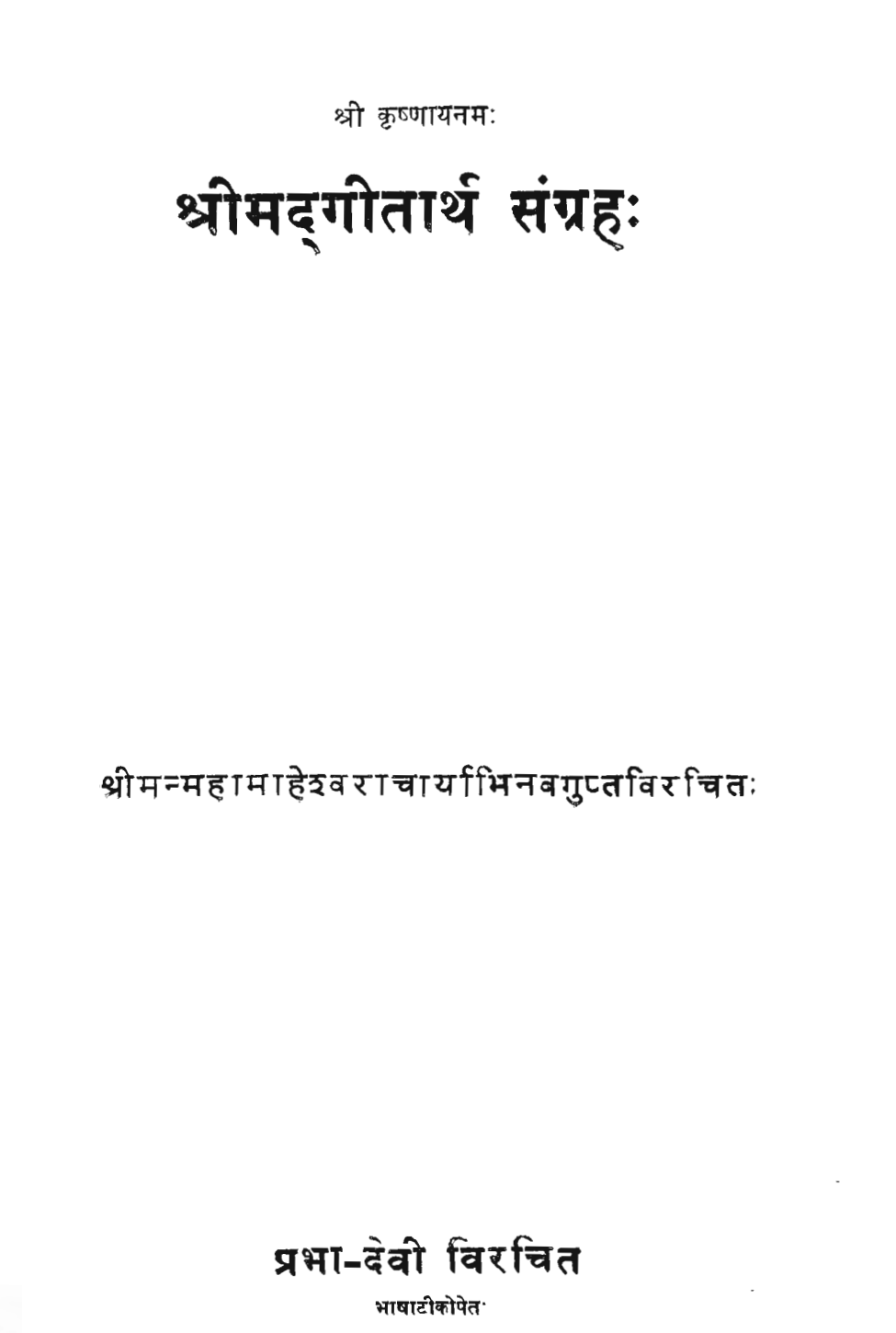Author: Veda Vyasa has originally written Mahabharata. Gita is a part of it. This is a commentary on the Gita by Kashmir scholar Abhinavagupta in the 10th century.
The Commentator: Abhinavagupta, a celebrated philosopher and theologian, belonged to the Kashmir Shaivism tradition. His works span a vast range of subjects, including philosophy, aesthetics, music, and more. His commentary on the Bhagavad Gita, the Gitartha Sangrah, reflects his profound understanding and offers a unique perspective on the ancient text. His profound insights and systematic approach have left an enduring legacy in both the spiritual and intellectual landscapes of India.
Early Life and Education
Abhinavagupta was born in the region of Kashmir into a Brahmin family. His father, Narasimhagupta, was a learned scholar, which provided Abhinavagupta with an early exposure to various branches of knowledge. His rigorous education encompassed a wide array of subjects including philosophy, theology, poetry, and aesthetics.
Philosophical Contributions
Abhinavagupta’s works span a diverse range of topics:
- Kashmir Shaivism: He is best known for his contributions to Kashmir Shaivism, elaborated in his magnum opus, the “Tantraloka,” a comprehensive treatise on the practices and philosophy of this tradition.
- Aesthetics: Abhinavagupta made significant contributions to Indian aesthetics, particularly through his commentary on Bharata Muni’s “Natyashastra.” His theories on rasa (aesthetic flavor) and dhvani (suggestion) have deeply influenced Indian art and literature.
- Bhagavad Gita: His “Gitartha Sangrah” offers a unique interpretation of the Bhagavad Gita, incorporating additional verses and a perspective influenced by Kashmir Shaivism.
Major Works
- Tantraloka: A voluminous text that systematically presents the philosophy and practices of Kashmir Shaivism.
- Abhinavabharati: A detailed commentary on the “Natyashastra,” offering profound insights into Indian dramaturgy and aesthetics.
- Gitartha Sangrah: An in-depth commentary on the Bhagavad Gita, distinguished by its inclusion of 19 extra verses.
Legacy
Abhinavagupta’s contributions have left a lasting impact on Indian philosophy, art, and literature. His works continue to be studied and revered for their depth, clarity, and profound insights into the nature of reality and the human experience.
Conclusion
Abhinavagupta stands as a towering figure in the history of Indian thought. His extensive works and innovative ideas have enriched the philosophical and cultural landscape of India, making him a central figure in the study of Indian philosophy and aesthetics.






